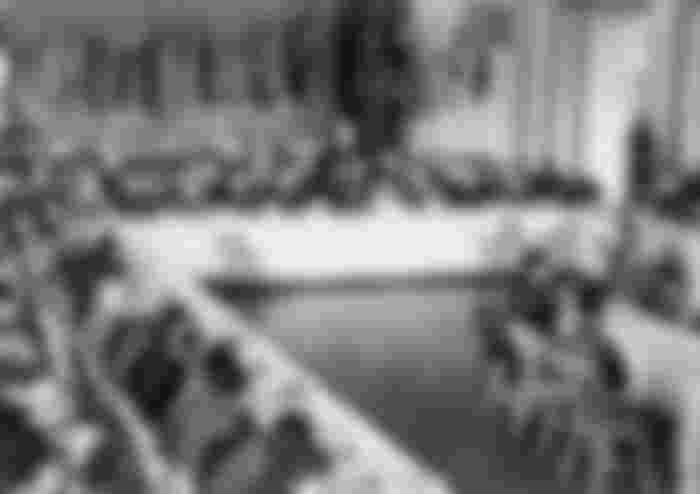World War II had just ended. The situation in Europe is miserable; At the bottom of the economy, infrastructure collapsed. Moreover, huge debts are breathing down the necks of the countries that lost the war. With this fragile economy, will they rebuild their country or pay off their debts? In such a situation, world leaders felt that the global economy could no longer be threatened in this way in the future. Because the economic impact is much like the butterfly effect, if there is any instability in the economy of one end of the world, its remnants will be felt in the country far away on the opposite side of the planet.
In 1944, leaders from 45 countries gathered in Bretton Woods, New Hampshire, USA, to try to curb the global economic crisis. The goal is to create some global institutions whose job it is to deal with the state of the world economy. Creating a global, universal economic system and helping each other in economic crises if necessary. The Bretton Woods Conference gave birth to the International Monetary Fund, the World Bank and several other international economic institutions, collectively known as the Bretton Woods Institutions.

Why was the IMF formed?
Where today's IMF works on global development, its purpose at birth was not. Global leaders wanted the IMF to work to resolve conflicts between countries that could lead to a global economic catastrophe or war. At the same time, they wanted a global platform for resolving post-World War II economic problems. The period after World War I and before World War II, from 1918 to 1939, was known as the Inter-War Period. At this time the state of the world economy was unstable; The global economy was plagued by high inflation, restrictions on global trade, speculation in foreign stock markets, rise in foreign reserves of central banks, the gold crisis, and the depreciation of the currency. To solve this problem, it is planned to form an economic institution i.e. IMF. The founders of the IMF adopted the gold exchange as the norm, known as the gold exchange standard.
Gold Exchange Standard
The Gold Exchange Standard is a process where the value of a country's currency (coins, and paper notes) is determined on the basis of gold. In this method the coin is measured as the equivalent of a certain amount of gold. In the IMF's Gold Exchange Standard, each country set the value of its currency in dollars. And the value of the dollar was directly linked to gold. At that time the price of one ounce of gold was 35 dollars. IMF member countries maintained dollar and gold reserves and could collect gold in dollars from the US Federal Reserve.
However, at present, the gold exchange standard is obsolete in the world economic system. Instead the Fiat Money system is used where the currency is not determined by any visible consumer goods but the government itself guarantees its security. Most of the world's currencies, including the dollar and the euro, are now considered fiat currencies.

A failed procedure
According to the Gold Exchange Standard, a country had to set a gold standard for a single currency per country. The country's central bank had to keep adequate gold reserves. An exception to this method would have reduced the amount of gold in the country's reserves. Reserved gold from one country would go to another. As a result, the currency of the country which lost gold would decrease and the currency of the country where the lost gold entered would increase. There were various reasons for this problem, for example, if a country imported more than it exported but could not bear the cost of imports with its own economy, then the country's central bank would start losing gold reserves. Theoretically, the Gold Exchange Standard was supposed to work automatically, but in reality it later turned out to be a failure. Because it is seen that many countries did not follow the rules that were fixed. On the contrary, in many cases they violated the rules.
The purpose of the IMF
189 countries are currently members of the IMF. The global economic watchdog also serves a number of purposes, including lending to various countries. In a nutshell, the IMF's objectives are:
International Financial Cooperation: One of the important objectives of this organization is to build financial support infrastructure among the countries of the world. Solve global economic problems by providing money, advice, talent, etc. During World War II, the organization played an important role in building financial cooperation between different countries of the world.
Stability of foreign exchange: Establishment of orderly exchange system to ensure the exchange rate of member countries, mutual exchange of foreign currency, etc.
Balanced Growth: The organization helps member countries, especially underdeveloped countries, in their economic growth development plans.
Capital investment: The IMF encourages developed countries to invest in developing and underdeveloped countries.
Emergency Assistance: If a member country is facing temporary economic problems, the IMF provides assistance to that country from the emergency funds of the organization.

Membership
The IMF has two types of member countries. Original Members, the countries that participated in the Bretton Woods Conference, and the countries that agreed to become members before 31 December 1945, are the main members of the IMF. Ordinary Members, with the exception of the original members, the member countries fall into this category.
Structure
Board of Governors: The Board of Governors is the highest decision-making body of the IMF. The governor or director general of the organization is appointed from the member countries. Usually the person becomes the finance minister of that member country or the head of the central bank. The rest of the governors were similarly appointed. Board members meet at annual meetings on a variety of issues.
Another board of 24 executive directors manages the day-to-day operations of the IMF. Eight of these directors are from China, France, Germany, Japan, Russia, Saudi Arabia, the United Kingdom, and the United States. The remaining 16 represent different countries in different parts of the world.
Ministerial committees: There are two executive councils, the International Monetary and Financial Committee (IMFC), and the Development Committee, to advise the Board of Governors. The 24-member IMFC meets twice a year to discuss global economic issues. This committee advises the IMF on its work plan. At the end of each meeting, it issues a joint notification summarizing the issues discussed at the meeting. This circular mentions the action plan for the next six months.

IMF in Bangladesh
Nationalization of State Resources: The Government of Bangladesh borrows from the IMF. However, the company also added some conditions with it. One of these conditions is the privatization or closure of state-owned industries, services, etc., and banks. One of the basic features of a liberal economy is the privatization of state resources. Therefore, after independence, many banks of Bangladesh were brought under the control of the state, but later as part of the economic reforms, many of these banks (about two) were taken over by private ownership, and private commercial banks were established. In 2003, Bangladesh took a loan from the IMF and the government closed the state-owned Adamjee Jute Mill on condition.
Introduction of Contractive Monetary System: On the advice of the IMF, Bangladesh Bank adopted a contractionary monetary system.
VAT and Supplementary Duty Reforms: In 2016, the IMF provided for the reform of the country's VAT and supplementary duties. As a result, the Bangladesh government enacted the VAT and Supplementary Duty Act that year.
The IMF's other conditions for lending to Bangladesh are to pursue a free market economy in trade and commerce, to further relax regulations on private enterprise business, and to reduce the tax rate on business. In addition, the IMF's conditions apply to the rise in fuel prices and the reduction of subsidies, the privatization of state-owned banks, and so on.

World Bank and World Bank Group
The World Bank does not mean just one bank but a number of financial institutions collectively known as the World Bank or World Bank Group. These are:
The International Bank for Reconstruction and Development (IBRD): This organization provides loans to middle income countries. However, in addition to the state, sometimes government or non-government organizations also provide loans for development projects.
The International Development Association (IDA): IDA was established in 1960. The company provides interest-free or short-term long-term loans to underdeveloped countries if necessary. This is because these countries do not have the capacity to borrow from IBRD's high interest rates. While providing financial assistance to poor countries on easy terms, the source of IDA's capital is grants from developed countries of the world.
The International Finance Corporation (IFC): The world's largest development agency works exclusively with the private sector. Through financial investment, internationalization of capital, business or government consulting, the organization helps countries around the world reach sustainable development goals.
The International Center for Settlement of Investment Disputes (ICSID): This organization deals with the legal issues of global economic investment.
The Multilateral Investment Guarantee Agency (MIGA / MIGA): Established in 1988, the organization's mission is to ensure foreign direct investment in developing countries to achieve economic growth, poverty reduction, and quality of life. To this end, Miga provides political risk insurance or guarantee to investors.
IBRD and IDA - the World Bank is basically a combination of these two organizations. The other three organizations are part of the World Bank, but they are legally and economically independent. In total, these five organizations are collectively known as the World Bank Group.

The purpose of the World Bank
The purpose of the 189-member World Bank is to reduce economic inequality between rich and poor nations. And for that, the World Bank is trying to transform the wealth of the rich state into the growth of the poor state. The long-term goal of the organization is sustainable poverty alleviation. The World Bank works in a number of areas to achieve this goal. Such as:
Accelerate growth by eradicating poverty, especially in countries in the African region.
The biggest cause of poverty is war. Therefore, the World Bank helps the newly liberated countries to rebuild.
To show middle income countries the way to stay free from poverty.
Helping states prevent climate change.
Freedom from AIDS.
Expansion of free trade.
Low-interest lending; Interest-free lending; Grant; Development of education, infrastructure, etc .; Modernization of the state's economic, agricultural, etc. sectors; The World Bank also manages natural resources.
The difference between the IMF and the World Bank
Although the names or types of the two institutions seem close, there are significant differences between the IMF and the World Bank. The World Bank is basically a development agency. The IMF, on the other hand, is a cooperative economic body that acts as an international accountant for the debts of various countries. To become a member of the World Bank, a country must first become a member of the IMF. But both have different motives, different structures, and different sources of capital. Both organizations work in their own way to achieve their goals.
The IMF is smaller in size than the World Bank. Again, unlike the World Bank, it does not have any subordinate branches or affiliated organizations. Although the number of IMF officials and employees is two to two and a half thousand, about 7000 employees work under the World Bank Group. There are also differences in the type of work of these employees, workplaces, etc. of the two organizations.
Thanks to everyone for reading this article





